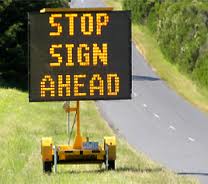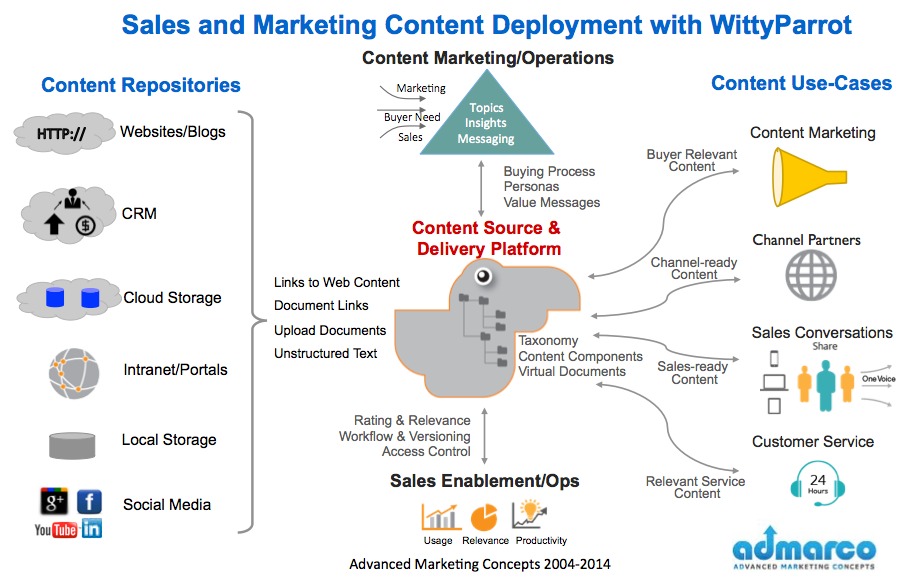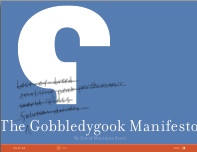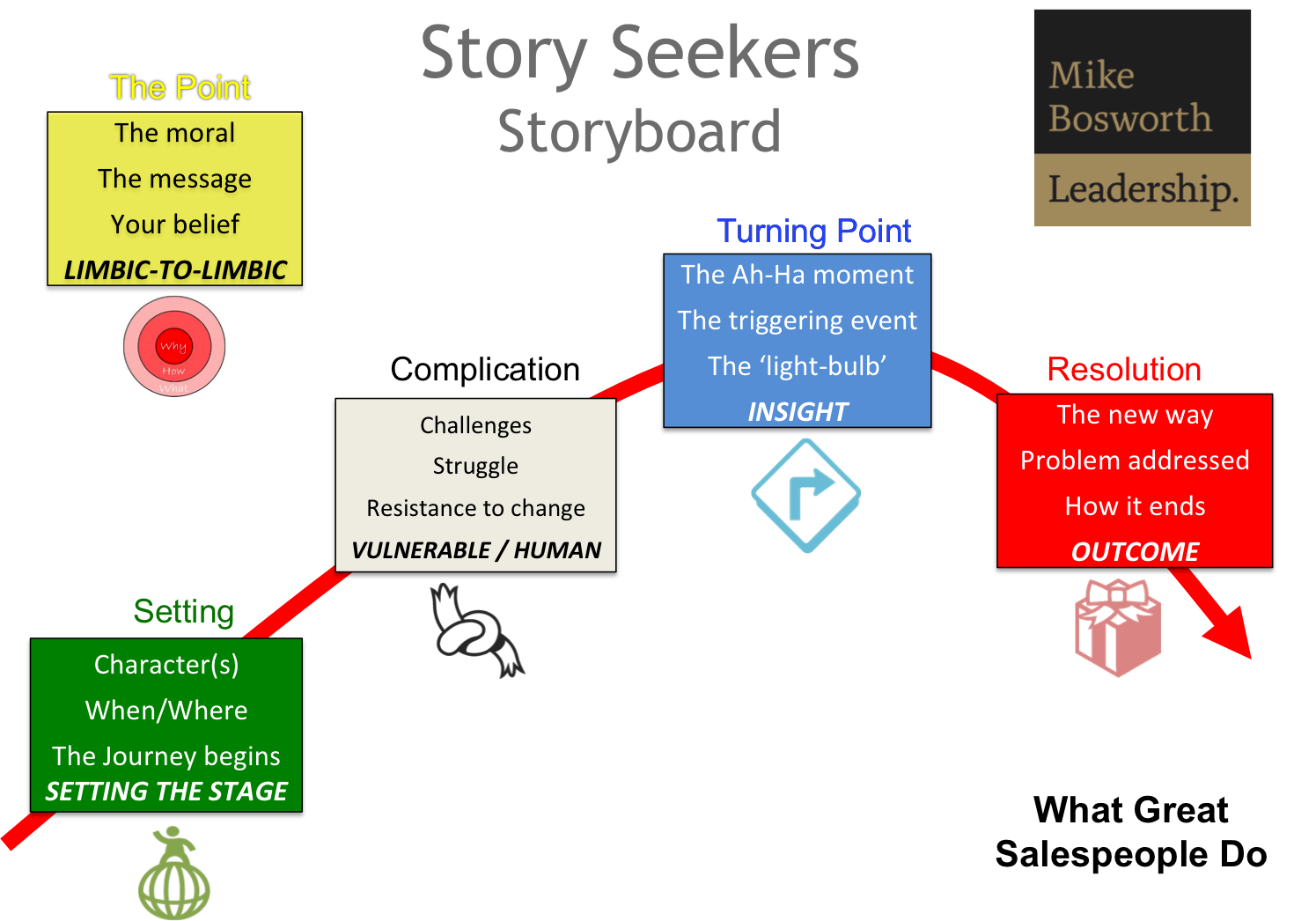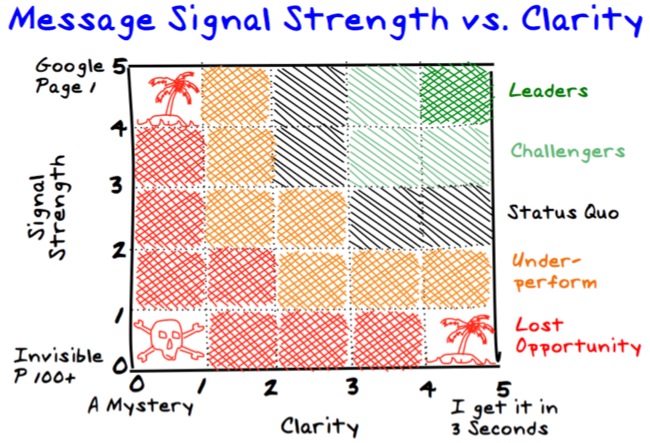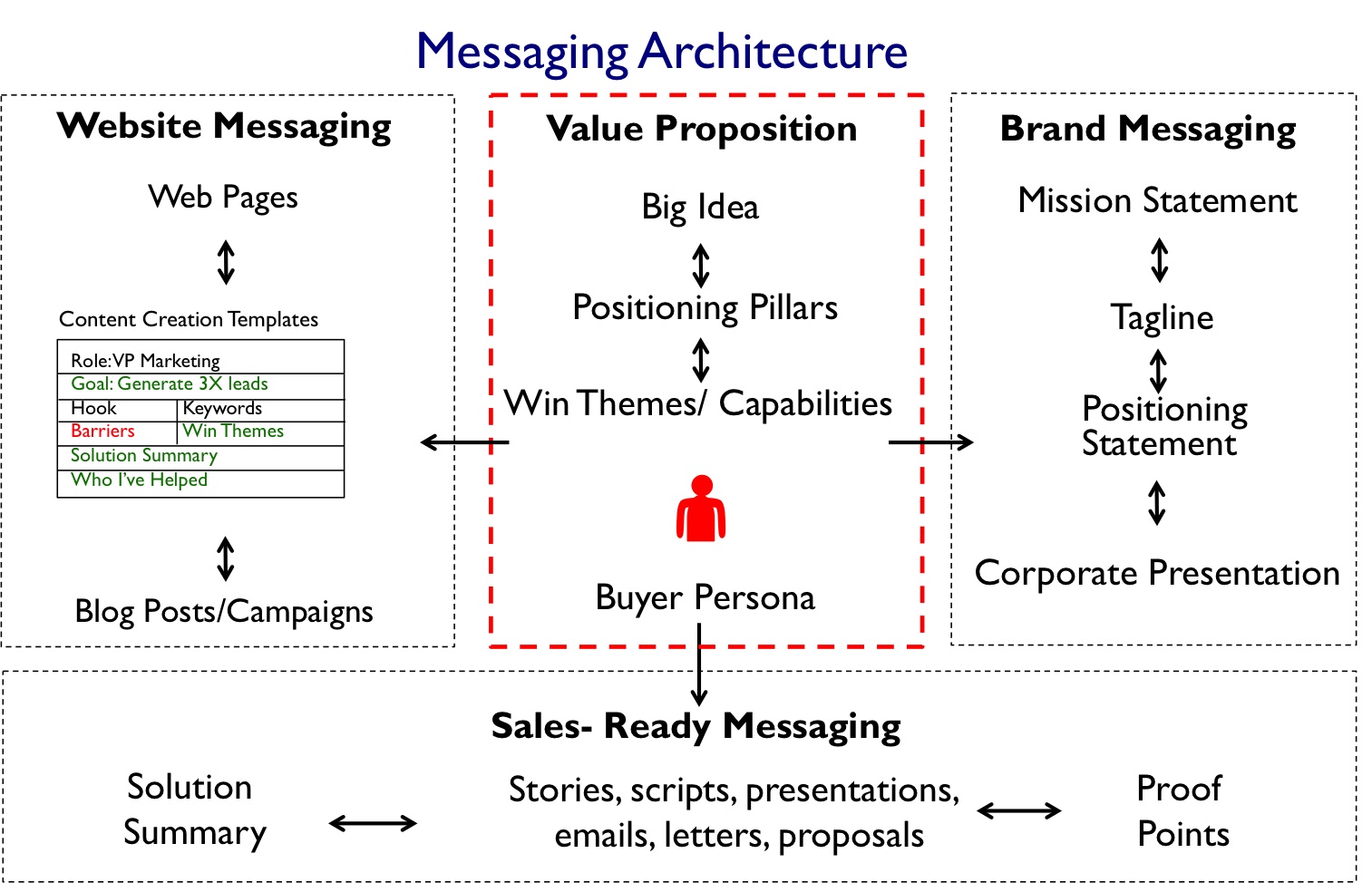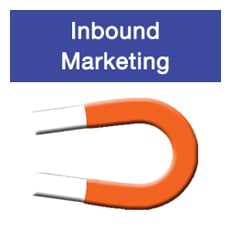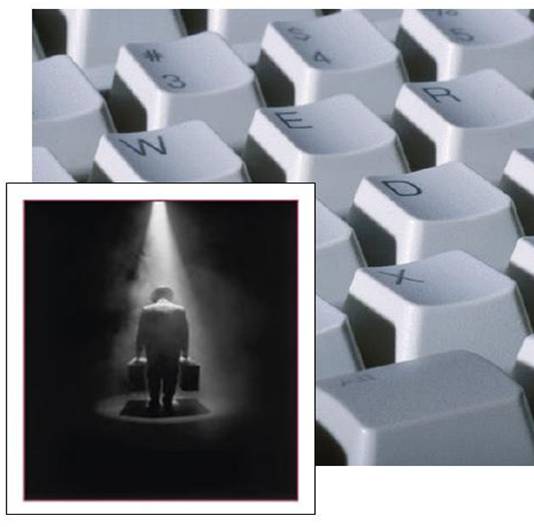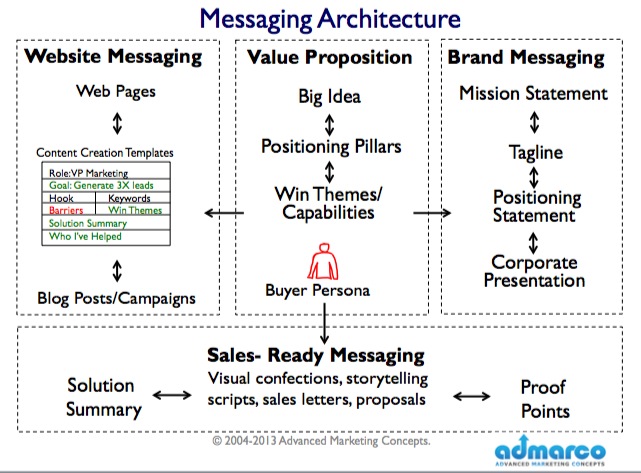I spoke with a prospective client this week in the marketing services business and after a brief introduction she expressed her frustration, "We’re doing all this marketing 2.0 stuff, but we're not getting in the door".
Prior to the call I ran a Marketing Grader report and her Website scored above 65% in all three areas of all sites graded for Inbound Marketing potential by HubSpot's Marketing Grader.
The crux of the problem is that you can be doing all this Marketing 2.0 stuff and still failing if you're off target in your messaging and out of sync. with market and using sub-optimal practices.
In this case, the marketing services business is transforming rapidly from the old interrupt driven model of push-marketing, advertising and PR placement, to the opt-in, inbound marketing model of content creation, social networking and community building, underpinned by analysis and testing.
The issues that surfaced during our conversation are common symptoms of the structural change in this sector and they are summarized below;–
3 min read
We’re doing all this marketing 2.0 stuff, but nothing’s working!
By Mark Gibson on Oct 10, 2022 12:00:00 AM
Topics: inbound marketing hubspot marketing messaging
2 min read
How to Grade Inbound Marketing Messaging Effectiveness
By Mark Gibson on Sep 10, 2022 12:00:00 AM
Most of the readers of this blog will agree that Inbound Marketing or Internet Marketing is the future of marketing; but it's a journey, not a one-off event and there is no final destination, because the foundation technology and tools are constantly evolving and the horizon as to what is achievable is ever-expanding.
Topics: inbound marketing messaging value marketing messaging
3 min read
Turn Marketing Messaging & Sales Content into Sales Conversations
By Mark Gibson on Jul 14, 2022 12:00:00 AM
Ask any marketer or sales enablement professional how many marketing/sales messaging projects they have completed or participated in the past 10 years and you will hear anywhere from none to over a dozen.
Ask those same professionals, how many of those projects actually paid a dividend on the investment and effort to create them and you will get a lot of head shaking.
Topics: sales enablement marketing messaging
4 min read
Kill these 10 Words from your Copy to Improve Marketing Performance
By Mark Gibson on Jul 11, 2022 12:00:00 AM
Words. Often it's the little things that turn visitors off after arriving at your Website, reading your copy in a brochure or sales letter, or suffering through a bad PowerPoint presentation.
The technology business is rife with words in Website, whitepaper copy and bad PowerPoint presentations, that I call "product-speak".
Write from your Best Customer's Point of View
When people read your copy, visit your Website or sit through your presentation, they are doing so because they have pressing issues or problems that they need to solve. When you write - start from the point of view of your buyer's needs, not your "ground-breaking" product, unless you want to sound just like your competition.
David Meerman Scott calls these words Gobbledygook and he wrote a brilliant E-Book that you can download instantly called The Gobbledygook Manifesto.
You can even run your copy through a content analysis tool called Gobbledygook Grader, to identify text that could be improved.
You might find David's blog "The Four P's of Marketing" that topples one of the pillars of marketing literature worth a read...and a laugh!
If you need help in translating your "product speak" into something that your visitors will want to read, then we can help.
In our work with technology companies in creating website messaging and whiteboard stories, we see the following words or phrases frequently.
My Top 10 "Product-Speak" words.
Topics: marketing messaging marketing positioning gobbldygook
4 min read
Life after Powerpoint - Using Stories for Engagement
By Mark Gibson on Jun 13, 2022 12:00:00 AM
The night before the messaging workshop my client requested that we use a different approach to creating the messaging, which made my PowerPoint deck redundant. Fortunately the client had a whiteboard and a flip chart handy.
Starting a Meeting with a Story
To kick off a 3-day workshop, I still needed engagement and buy-in from the audience. My sponsor in the messaging workshop and I had worked on a similar messaging and sales enablement project several years earlier, which was transformational for his company and he introduced me and told his version of the "Who I've Helped Story" of our prior engagement, from the customers point of view, which was fantastic as this story is always more powerful coming from the customer, vs. the supplier.Since many of the participants did not know me, I started with my "Who I Am" story. In 90 seconds I told the story of the past 10 years of my professional life as a consultant. It wasn't a story about how fantastic I am - it was about the journey, the struggle and the lessons learned, that give me unique insight.
- In 2003 I was staring down the barrel of a 2nd lay-off in 2 years. (setting stage & vulnerability)
- Realized customers had changed and I hadn't. (journey begins)
- Didn't have 20 years selling experience - really had 1 year experience repeated 20 years over. (vulnerability)
- Started a search for new ideas, journey of discovery - (call to adventure)
- (Joke) My wife heard me practicing my story - she said "keep looking" (humor)
- Moved to UK, started a sales training consultancy (transition)
- First graduates could get meetings with CXO's, but when they got there would revert to "product-speak" - Realized they needed messaging to help engage buyers around their issues. Started messaging which has been a part of every engagement since. (struggle + Insight)
- In 2008 we had customers, but no leads - introduced to HubSpot and started creating content and generating leads and has become a part of our DNA. Messaging now used to drive content marketing. (experience + lightbulb moment)
- 2010 relocated back to USA and met Corey Sommers at Whiteboard Selling, invited me to work with him to use my sales training experience and messaging skills to create visual stories. (relevant experience)
- 2013 connected with Mike Bosworth and learned story telling, come full circle - that's why were here - capture your message so everyone can tell your story. (call to action and resolution)
Using a Curiosity Hook for Enrolment
After I told my "Who-I-am" story, I drew three large numbers on the flip chart.I asked the audience what they thought the
Topics: mike bosworth sales training marketing messaging storytelling
4 min read
Measuring Marketing Messaging Clarity and Effectiveness
By Mark Gibson on Apr 12, 2022 12:00:00 AM
How important is clarity in your messaging and how clear is your message?
I'd say it's the difference between life and death for start-ups.
Sales and marketing are dependent on the clarity of your message to win mindshare, generate leads; and to engage, diagnose and qualify new opportunities, yet clarity is often an afterthought.
I was prompted to write this article after a call this week with a technology company based in the Mid-West. This company has World leading technology, great vision and is completely failing in marketing.
They are in the red zone. When you arrive on their Website it is not possible to figure out that they do on the home page. Nor is it possible to figure out what they do by clicking on the CTA. You have to click on the product page to find the description of what they do and it's in 10 point font in the middle of the first paragraph. This is not a joke....this is a disaster.
Topics: sales and marketing alignment marketing messaging messaging architecture
2 min read
A Messaging Architecture to Convey Value, Position, Differentiate
By Mark Gibson on Mar 10, 2022 12:00:00 AM
A Messaging Architecture Captures your Value Proposition
In the dot.com boom and Outbound Marketing World of just a few years ago, marketing, advertising and branding agencies engaged well funded startups in positioning and branding exercises and at the same time relieved the investors and company of a lot of cash.This sort of top-down branding went hand in hand with lavish launch parties and first-mover takes all mentality that fueled the dot.com boom and subsequent bust.
Driving eyeballs was what mattered and often the brand message was disconnected from the underlying value of the products and the sales team's ability to articulate it in conversation with buyers.
It is difficult to imagine spending lavish sums on branding, positioning and advertising in today's Inbound Marketing, lean-startup World, where every dollar spent is closely scrutinized and analyzed for ROI, and where it is recognized that B2B brands are built over time, based on customer success.
To me it seems obvious that the branding should be based on the value the company creates for customers and we can capture this information through a careful analysis of how customers use the products/services.
Brand Positioning
What matters in messaging is connecting your brand and positioning message with the most visceral value-creation proposition for each interested group of buyers in your prospect universe. Al Reis in the book "Positioning" suggests rather than try and create something new and different in the mind of the buyer, we need to manipulate what is already there and re-tie the connections that already exist.Brand Messaging Process
A methodology for messaging value is built from the bottom-up, based on connecting value-creation to buyer-needs rather than a top-down "Mad-Men" view of the World into the reality of selling products/services...we have tried both approaches and bottom-up works best.- Start your journey to clarity in messaging value with a sales and marketing messaging alignment workshop. The output of this process is Messaging Architecture that will help marketers and salespeople position capabilities and engage buyers in conversations around their problems vs. the product features.
- Identify your buyer-persona's and their roles, goals, issues and problems that your products/services can address
- Next, map your relevant capabilities that can help buyer persona's solve their problems
- Group Win-themes into logical clumps and abstract the positioning pillars to create clarity in positioning vs competition.
- At this point we will have enough information to create visual confections and visual stories that salespeople can use to engage buyers in conversation around their issues.
- With the Value Proposition in place, the Brand Message including mission-statement, tagline, corporate positioning and corporate presentation (visual confection) can easily be derived.
- Content Creation Templates are used to develop consistent content across the company for both blogging and Website content by insiders as well as external writers, by extracting win themes and buyer persona issues and appropriate keywords.
- Create a "Mission Statement" that helps employees connect their daily toil with company vision, revenue, profit and customer satisfaction goals.
- Create a positioning statement that identifies the market segment you wish to occupy in the mind of the buyer and why your product/service is different and valuable.

Topics: messaging value marketing messaging differentiation branding
4 min read
Are You Ready For Inbound Marketing Yet?
By Mark Gibson on Mar 9, 2022 12:00:00 AM
Chances are you didn’t arrive here by accident; you followed a link from either a search engine or a Blog or links from a social network site…welcome to inbound marketing.
Topics: inbound marketing marketing messaging
3 min read
Sales Performance Tools for Getting Started on Sales Effectiveness
By Mark Gibson on Feb 8, 2022 12:00:00 AM
Topics: inbound marketing marketing messaging
3 min read
5 Steps to Creating Marketing Content that Resonates with Buyers
By Mark Gibson on Jan 13, 2022 12:00:00 AM
Weak Marketing Kills Dreams and Companies
Innovation in our culture is constant, with exciting products created in start-up companies, or incubated in existing corporations, that promise to enhance our productivity and enjoyment of life.Most of these companies won't make it out of start-up mode and the underlying IP will either get sold for pennies on the dollar, or product sales will limp along until the product is finally killed-off.
There are myriad possible causes for failure, but one common thread is a lack of awareness in the potential buying audience, because the problem solving capability or potential to create value is invisible in Internet searches. If keywords containing your brand and product names are the primary sources of the little organic traffic you do get, then you have a problem, because buyers who don't know your brand or product cannot and will not find you.
This problem is not reserved for start-ups, I have seen it dozens of times in Silicon Valley in SMB companies ranging from ten million to half a billion dollars in revenue.
Sales and marketing fiefdoms and a lack of collaboration on messaging can lead to two different and fuzzy languages being spoken to the customer and buyers being left to figure out for themselves how the products could create value in their environment.
Today there are very effective ways of getting products into the hands of buyers and



